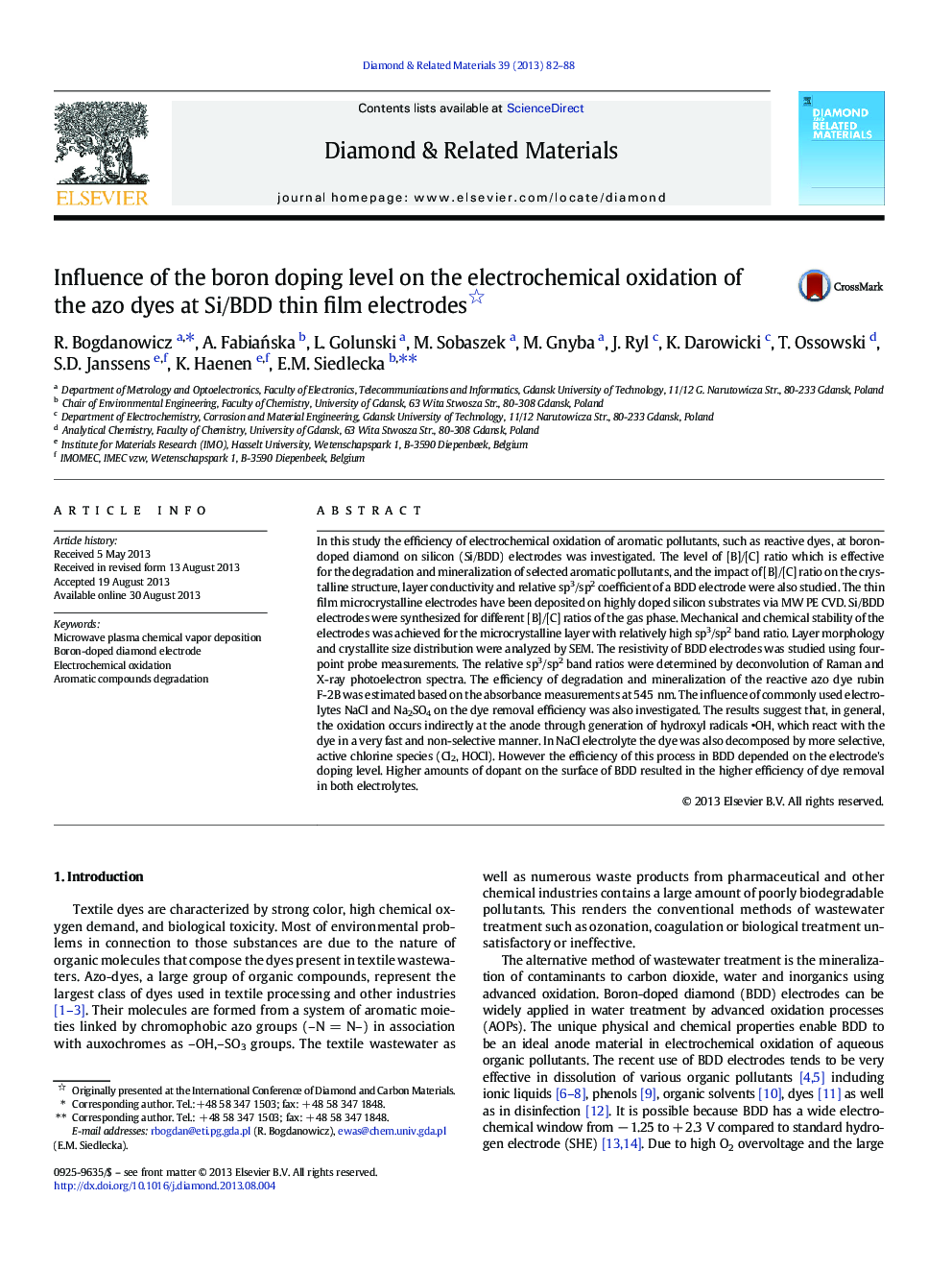| کد مقاله | کد نشریه | سال انتشار | مقاله انگلیسی | نسخه تمام متن |
|---|---|---|---|---|
| 7111528 | 1460792 | 2013 | 7 صفحه PDF | دانلود رایگان |
عنوان انگلیسی مقاله ISI
Influence of the boron doping level on the electrochemical oxidation of the azo dyes at Si/BDD thin film electrodes
دانلود مقاله + سفارش ترجمه
دانلود مقاله ISI انگلیسی
رایگان برای ایرانیان
کلمات کلیدی
موضوعات مرتبط
مهندسی و علوم پایه
سایر رشته های مهندسی
مهندسی برق و الکترونیک
پیش نمایش صفحه اول مقاله

چکیده انگلیسی
In this study the efficiency of electrochemical oxidation of aromatic pollutants, such as reactive dyes, at boron-doped diamond on silicon (Si/BDD) electrodes was investigated. The level of [B]/[C] ratio which is effective for the degradation and mineralization of selected aromatic pollutants, and the impact of [B]/[C] ratio on the crystalline structure, layer conductivity and relative sp3/sp2 coefficient of a BDD electrode were also studied. The thin film microcrystalline electrodes have been deposited on highly doped silicon substrates via MW PE CVD. Si/BDD electrodes were synthesized for different [B]/[C] ratios of the gas phase. Mechanical and chemical stability of the electrodes was achieved for the microcrystalline layer with relatively high sp3/sp2 band ratio. Layer morphology and crystallite size distribution were analyzed by SEM. The resistivity of BDD electrodes was studied using four-point probe measurements. The relative sp3/sp2 band ratios were determined by deconvolution of Raman and X-ray photoelectron spectra. The efficiency of degradation and mineralization of the reactive azo dye rubin F-2B was estimated based on the absorbance measurements at 545Â nm. The influence of commonly used electrolytes NaCl and Na2SO4 on the dye removal efficiency was also investigated. The results suggest that, in general, the oxidation occurs indirectly at the anode through generation of hydroxyl radicals
- OH, which react with the dye in a very fast and non-selective manner. In NaCl electrolyte the dye was also decomposed by more selective, active chlorine species (Cl2, HOCl). However the efficiency of this process in BDD depended on the electrode's doping level. Higher amounts of dopant on the surface of BDD resulted in the higher efficiency of dye removal in both electrolytes.
- OH, which react with the dye in a very fast and non-selective manner. In NaCl electrolyte the dye was also decomposed by more selective, active chlorine species (Cl2, HOCl). However the efficiency of this process in BDD depended on the electrode's doping level. Higher amounts of dopant on the surface of BDD resulted in the higher efficiency of dye removal in both electrolytes.
ناشر
Database: Elsevier - ScienceDirect (ساینس دایرکت)
Journal: Diamond and Related Materials - Volume 39, October 2013, Pages 82-88
Journal: Diamond and Related Materials - Volume 39, October 2013, Pages 82-88
نویسندگان
R. Bogdanowicz, A. FabiaÅska, L. Golunski, M. Sobaszek, M. Gnyba, J. Ryl, K. Darowicki, T. Ossowski, S.D. Janssens, K. Haenen, E.M. Siedlecka,